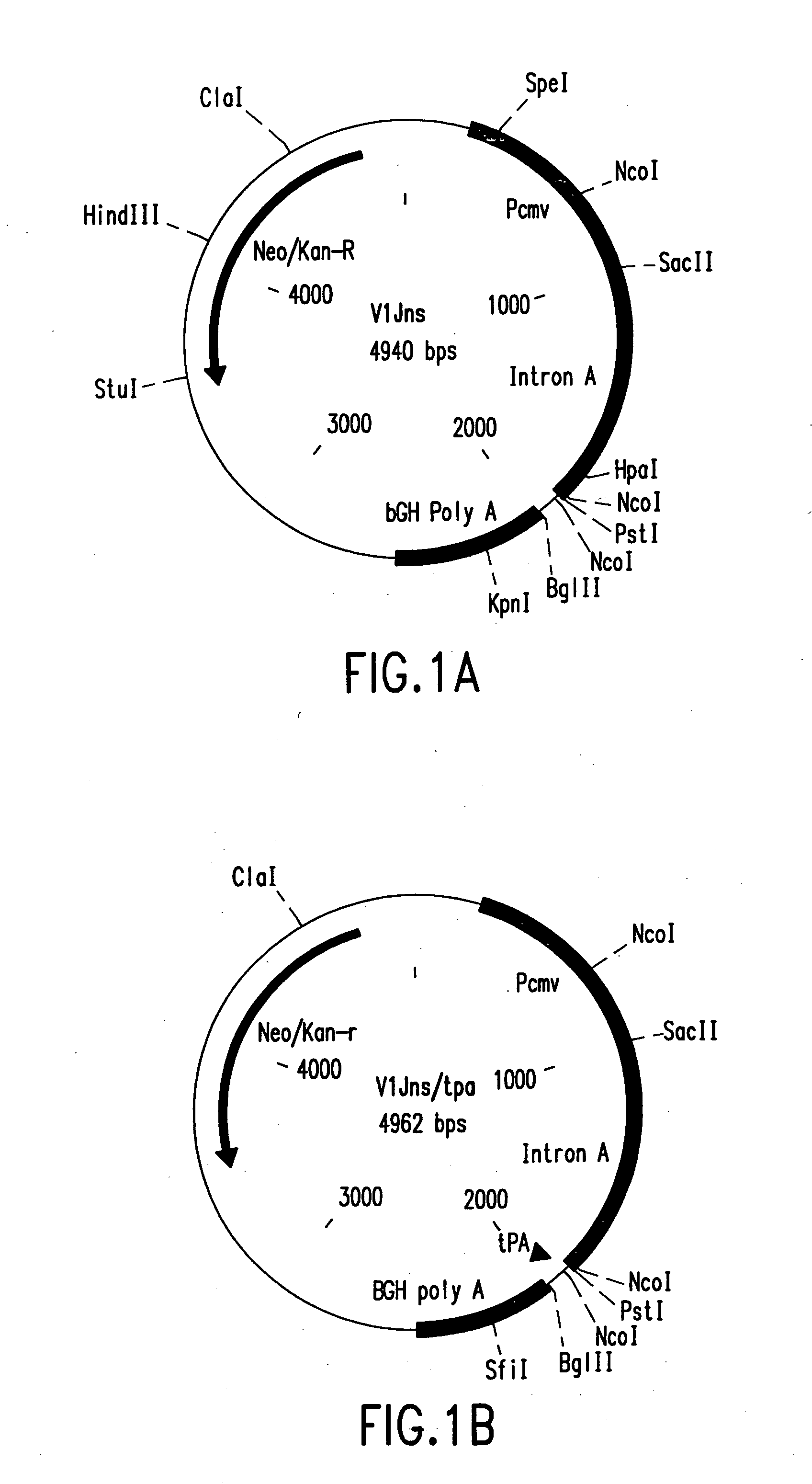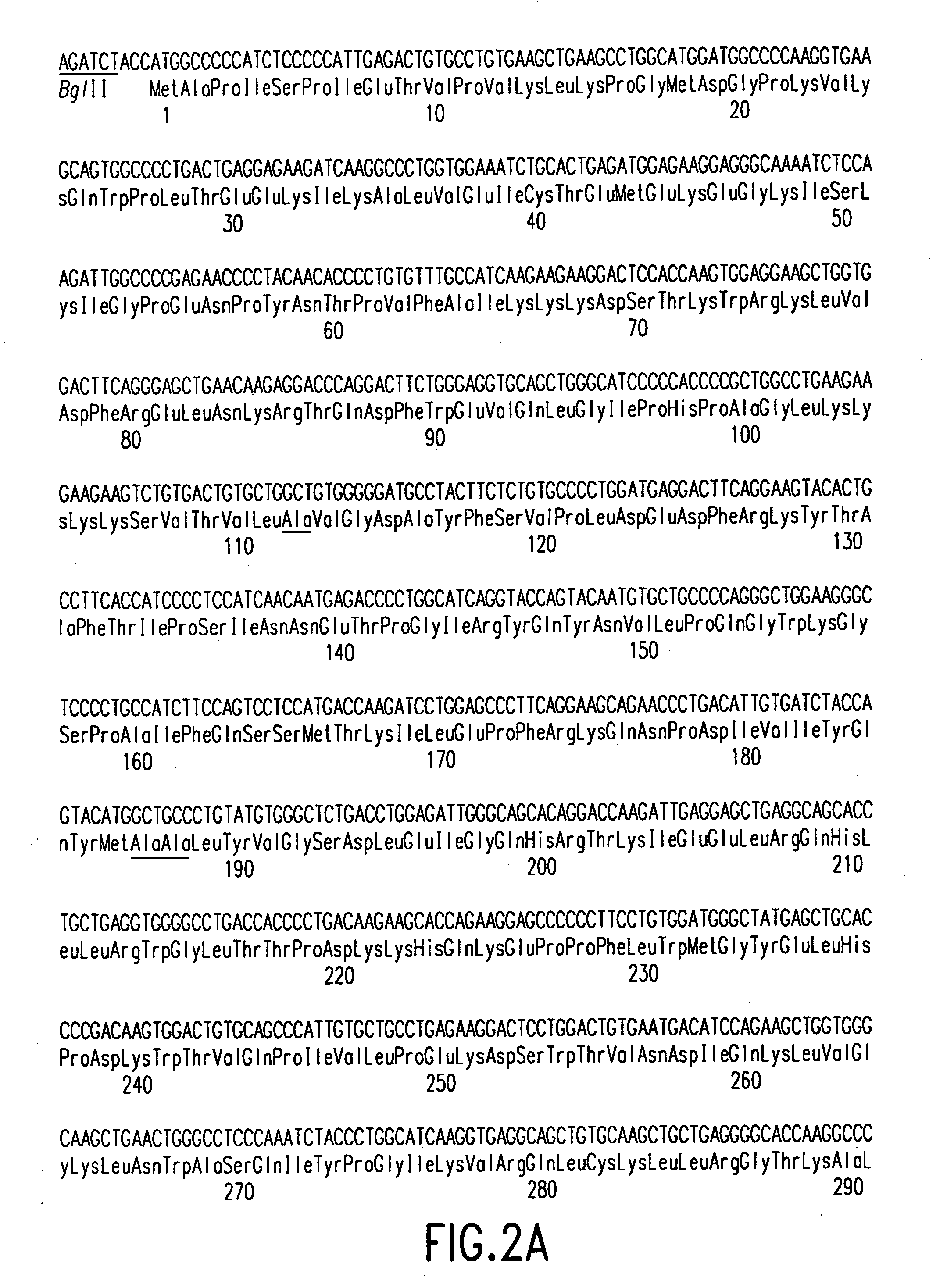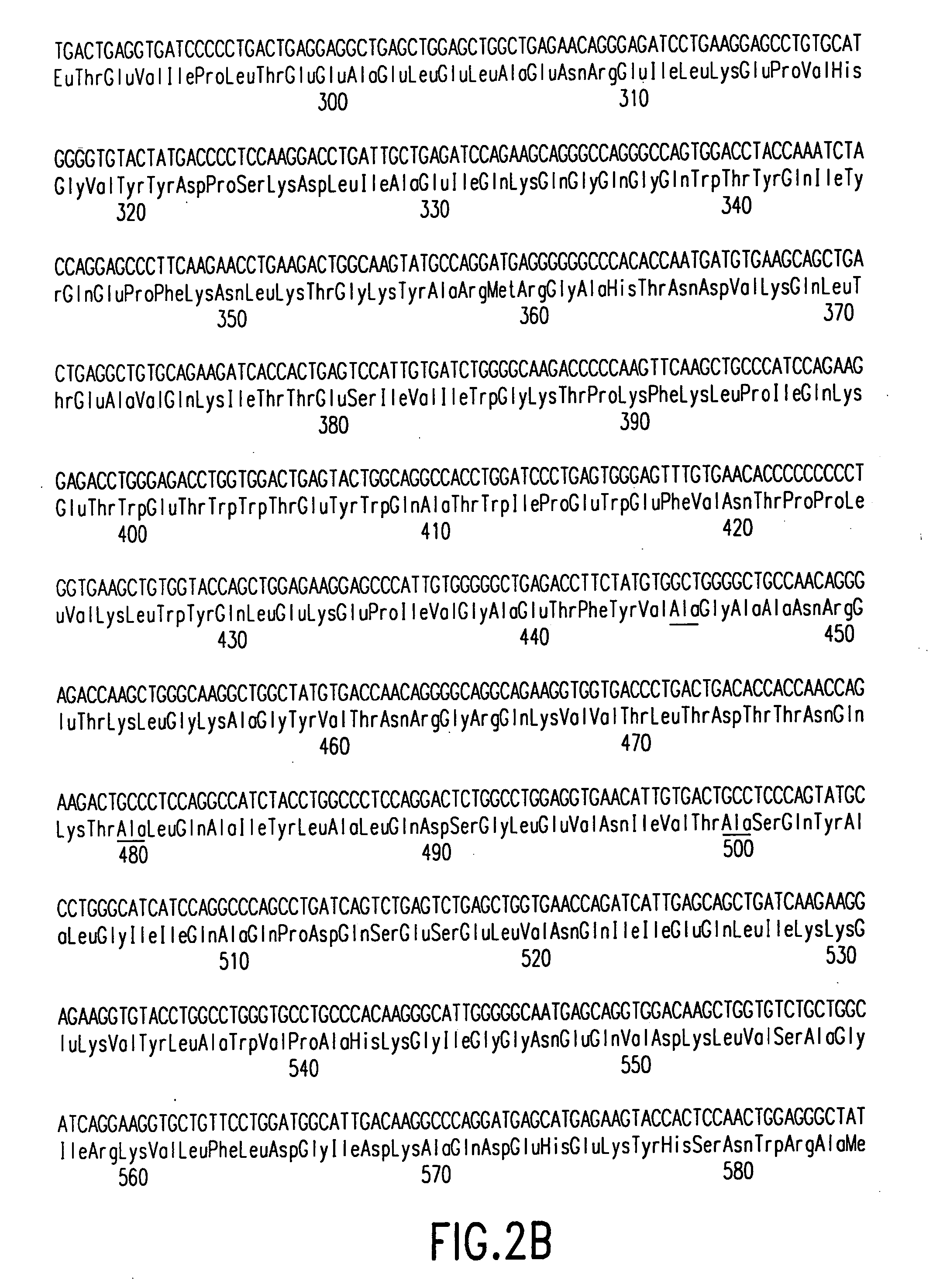Polynucleotide vaccines expressing codon optimized HIV-1 Pol and modified HIV-1 Pol
a technology of polynucleotide and hiv-1, which is applied in the direction of dna/rna vaccination, genetic material ingredients, peptide sources, etc., can solve the problems of minimal impact on halting the spread of infection within the human population, drug effects that are not significant, and the cd4 t-cells seriously impair the body's ability to fight most invaders, etc., to prolong the asymptomatic phase of hiv-1
- Summary
- Abstract
- Description
- Claims
- Application Information
AI Technical Summary
Benefits of technology
Problems solved by technology
Method used
Image
Examples
example 1
Vaccine Vectors
[0069] V1—Vaccine vector V1 was constructed from pCMVIE-AKI-DHFR (Whang et al., 1987, J. Virol. 61: 1796). The AKI and DHFR genes were removed by cutting the vector with EcoRI and self-ligating. This vector does not contain intron A in the CMV promoter, so it was added as a PCR fragment that had a deleted internal SacI site [at 1855 as numbered in Chapman, et al., 1991, Nuc. Acids Res. 19: 3979). The template used for the PCR reactions was pCMVintA-Lux, made by ligating the HindIlI and NheI fragment from pCMV6a120 (see Chapman et al., ibid.), which includes hCMV-IE1 enhancer / promoter and intron A, into the HindIII and XbaI sites of pBL3 to generate pCMVIntBL. The 1881 base pair luciferase gene fragment (HindIII-SmaI Klenow filled-in) from RSV-Lux (de Wet et al., 1987, Mol. Cell Biol. 7: 725) was ligated into the SalI site of pCMVIntBL, which was Klenow filled-in and phosphatase treated. The primers that spanned intron A are: 5′ primer: 5′-CTATAT AAGCAGAGCTCGTTTAG-3′ ...
example2
[0079] Codon Optimized HIV-1 Pol and HIV-1 IA Pol Derivatives as DNA Vector Vaccines Synthesis of WT-optpol and IA-opt-pol Gene—Construction of both genes were conducted by Midland Certified Reagent Company (Midland, Tex.) following established strategies. Ten double stranded oligonucleotides, ranging from 159 to 340 bases long and encompassing the entire pol gene, were synthesized by solid state methods and cloned separately into pUC18. For the wt-pol gene, the fragments are as follows: [0080] BglII#1-Ecl136II half site at 282=pJS6A1-7 [0081] PmlI half site at #285—Ecl136II half site at #597=pJS6B2-5 [0082] SspI half site at #600—Ecl136II half site at #866=pJS6C1-4 [0083] SmaI half site at #869—ApaI #1095=pJS6D1-4 [0084] ApaI #1095-KpnI#1296=pJS6E1-4 [0085] KpnI #1296—XcmI #1636=pJS6F1-5 [0086] XcmI #1636—NsiI #1847=pJS6G1-2 [0087] NsiI #1847—BclI half site at #2174=pJS6H1-14 [0088] BclI half site at #2174—SacI #2333=pJS6H1-2 [0089] SacI #2333- BglII #2577=pJS6J1-1
EcoRI and HindI...
example 3
HIV-1 POL Vaccine—Rodent Studies
[0103] Materials—E. coli DH5α strain, penicillin, streptomycin, ACK lysis buffer, hepes, L-glutamine, RPMI1640, and ultrapure CsCl were obtained from Gibco / BRL (Grand Island, N.Y.). Fetal bovine serum (FBS) was purchased from Hyclone. Kanamycin, Tween 20, bovine serum albumin, hydrogen peroxide (30%), concentrated sulfuric acid, β-mercaptoethanol (β-ME), and concanavalin A were obtained from Sigma (St. Louis, Mo.). Female balb / c mice at 4-6 wks of age were obtained from Taconic Farms (Germantown, N.Y.). 0.3-mL insulin syringes were purchased from Myoderm. 96-well flat bottomed Maxisorp plates were obtained form NUNC (Rochester, N.Y.). HIV-1IIIB RT p66 recombinant protein was obtained from Advanced Biotechnologies, Inc. (Columbia, Md.). 20-mer peptides were synthesized by Research Genetics (Huntsville, Ala.). Horseradish peroxidase (HRP)-conjugated rabbit anti-mouse IgG1 was obtained from ZYMED (San Francisco, Calif.). 1,2-phenylenediamine dihydrochlo...
PUM
| Property | Measurement | Unit |
|---|---|---|
| Mass | aaaaa | aaaaa |
| Mass | aaaaa | aaaaa |
| Mass | aaaaa | aaaaa |
Abstract
Description
Claims
Application Information
 Login to View More
Login to View More - R&D
- Intellectual Property
- Life Sciences
- Materials
- Tech Scout
- Unparalleled Data Quality
- Higher Quality Content
- 60% Fewer Hallucinations
Browse by: Latest US Patents, China's latest patents, Technical Efficacy Thesaurus, Application Domain, Technology Topic, Popular Technical Reports.
© 2025 PatSnap. All rights reserved.Legal|Privacy policy|Modern Slavery Act Transparency Statement|Sitemap|About US| Contact US: help@patsnap.com



